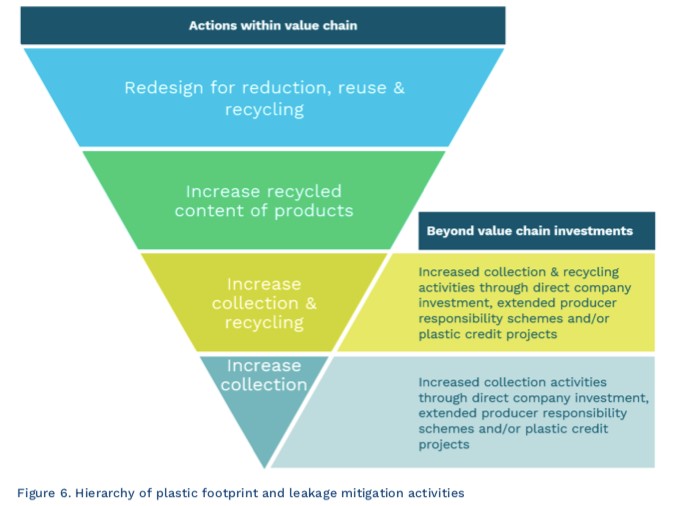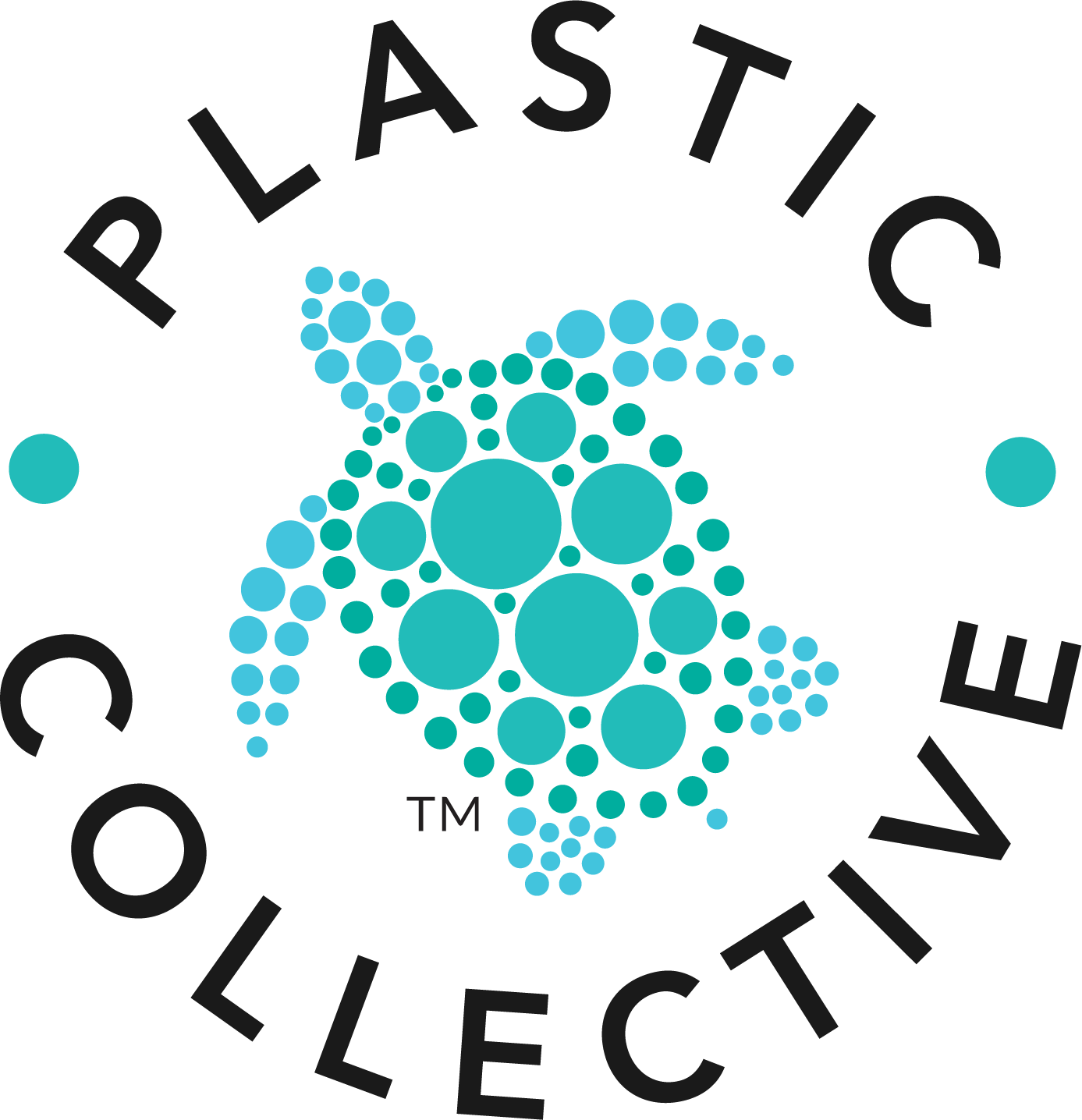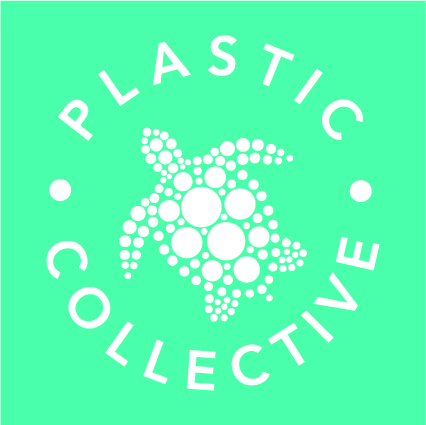Mitigation of Plastic Pollution – Climate Action on Plastic Waste, Mitigation Checklist

Mitigation of Plastic Pollution
This blog is the second in our blog mini series focused on Plastic Collective’s Plastic Pathways for Corporates which help corporates address plastic pollution as part of taking action on climate change and achieving their sustainability objectives, guided by the Guidelines for Corporate Plastic Stewardship, as released in February 2021 [1] (the “Corporate Guidelines”).
Plastic Collective‘s Plastic Pathways for Corporates take a corporate through these seven steps, based on the Corporate Guidelines:
- Define the scope of the Corporate’s new plastic stewardship initiative;
- Take stock of mitigation activities;
- Take stock of metrics such as the plastic footprint, leakage, recycled content and end of life waste management such as landfill and recycling rates;
- Identify possible commitments and claims, such as Net Zero, and plastic credits requirements;
- Identify partnerships;
- Establish longer term targets to use plastic better (such as reducing plastic packaging, and single use plastics, reuse of plastic) and to promote circular economy principles; and
- Communicate results.
For more information on Step 1 – define the scope, you can read Plastic Pathway – Guidelines for Corporate Plastic Stewardship: Intro
In this article we look at Step 2 – Take stock of mitigation activities.
We’ll address step 2 in two parts – first we’ll look more closely at the importance of mitigation activities in the context of corporate plastic stewardship, and examples of these activities, and then we’ll explain the “take stock” exercise that we perform in the Plastic Pathways for Corporates to understand the current landscape of a company’s mitigation activities.
What are mitigation activities?
Section 3 of the Corporate Guidelines presents opportunities for intervention, or mitigation activities, that a company can undertake to address the amount of plastic it uses, or the amount of plastic that subsequently becomes waste (e.g. after consumer use) and which may end up in the natural environment. Section 3 of the Corporate Guidelines also stresses the importance of a corporate reducing the tons of plastic in its plastic footprint and leakage over time. This is understandable considering the possible adverse consequences of plastic waste to the natural environment. Mismanaged plastic waste can end up as ocean plastic pollution, marine plastic pollution, marine debris, marine litter, plastic debris and microplastic pollution, all of which can have adverse impacts on the natural environment, ecosystems and marine environments.
The Corporate Guidelines present these mitigation activities in a mitigation hierarchy, as within and beyond value chain investments. The image below is reproduced from Section 3.1, Figure 6 of the Guidelines for Corporate Plastic Stewardship [1]:

Let’s look first at the within value chain mitigation activities as set out in Section 3.2 of the Corporate Guidelines:
1. Redesign for reduction, reuse and recycling: Companies should prioritize redesign of products and packaging and when doing so, focus on reducing the number of material types used and clearly communicating the plastics that are used (3R Initiative et al., 2021, pp.16-17).
For example, a company may:
- Redesign to reduce use of plastic in products and plastic packaging by eliminating plastic, light weighting, and replacing plastic with non-plastic, recyclable materials.
- Redesign to reuse plastic by implementing a reuse system such as refill at home, refill on the go, return from home or return on the go.
- Redesign to increase recyclability by avoiding composites made of multiple material types, avoiding materials and polymers not commonly used, ensuring any features such as labels are capable of being processed by the relevant recycling system, making sure products and packaging can be disassembled, minimizing use of dyes, pigments and inks and avoiding toxic additives (3R Initiative et al., 2021, pp. 16-17).
2. Increase recycled content of products: Use post consumer recycled material input over virgin plastic. This will promote recycled plastic production and reduce demand for virgin production of plastic (3R Initiative et al., 2021, p. 18). For example, using recycled plastic content in plastic packaging such as plastic bottles and plastic bags.
3. Increase collection and recycling: Implement collection and recycling systems as a means to address solid waste management, such as take back systems, that focus on closed loop recycling (where waste is recycled into something very similar to what it started out as) that align with circular economy principles (3R Initiative et al., 2021, p. 18).
4. Increase collection (where recycling is not possible): Ensure the plastic’s end of life is one of (i) reprocessing (e.g. turned into plastic bricks which may be used in construction), (ii) incinerated with energy recovery (e.g. power generation), or (ii) disposed of to a landfill that meets the requirements of the Corporate Guidelines (3R Initiative et al., 2021, pp. 18-19).
The Corporate Guidelines acknowledge that it is unlikely that a corporate will be able to address all plastic using within value chain mitigation activities. For this plastic they cannot prevent, corporates can instead compensate for it using beyond value chain investments as set out in Section 3.3 of the Guidelines for Corporate Plastic Stewardship. Let’s look at these a bit more closely:
- Plastic Credits: A Plastic Credit represents the collection or recycling of a quantity of plastic which is additional to what would have happened without a crediting mechanism. Projects that perform the underlying collection and recycling activity comply with strict environmental and social safeguards and are only issued plastic credits against collection and recycling activity that is verified by a third party accredited validation and verification body (3R Initiative et al., 2021, pp. 20-21). Read more here about how plastic credits work.
- Extended Producer Responsibility (“EPR”) schemes: companies fund plastic waste management and collection infrastructure, either as required through legislation, or voluntarily (3R Initiative et al., 2021, p. 21).
- Other beyond value chain investments: Other quantifiable activity that companies sponsor that permanently removes or recycles plastic, which would not have occurred without the activity itself, and where there is no risk of double counting – e.g. no risk that two organizations will take credit for the same plastic collection/recycling activity) (3R Initiative et al., 2021, p. 22).
Now that we understand the different mitigation activities, let’s look at the specific “take stock” exercise we perform in Plastic Collective’s Plastic Pathways for Corporates.
Take stock of mitigation activities:
As it relates to the mitigation activities, Section 1.2 and Section 3 of the Guidelines for Corporate Plastic Stewardship [1] say that Companies should:
- Start with activities targeted as high up the value chain as possible – those at the top of the mitigation hierarchy – as a priority.
- Prioritize within value chain investments over beyond value chain investments.
- Use beyond value chain investments to complement a company’s within value chain activities.
- Assess social, economic, and environmental tradeoffs between mitigation activities and apply the most beneficial activities, wherever they sit in the hierarchy.
- Always consider safeguards to mitigate any potential adverse effects of implemented activities including environmental impacts and impacts to human health.
Using our Plastic Mitigation Checklist, we work with you to identify the nature and extent of your activities along the mitigation hierarchy. This helps identify areas along the hierarchy where you have taken action as well as those for future focus. This “take stock” gives a comprehensive overview of the company’s mitigation activities as they stand today, and provides a foundation for later steps in the Plastic Pathway such as establishing longer term targets and communicating to stakeholders including markets and customers.
Next time we look at Step 3: Take stock of the plastic metrics where we look at the plastic footprint and identify tons of plastic used, as well as other metrics such as leakage and end of life waste management such as landfill, incineration, and recycling rates.
From air pollution and carbon emissions to biodiversity and sustainable development, find out more about Plastic Collective and get latest news and info about Plastic recycling, clean energy and the effects of climate change, by subscribing to the Plastic Collective newsletter.
Sources:
[1] 3R Initiative et al. (2021). Guidelines for Corporate Plastic Stewardship. https://www.3rinitiative.org/guidelines-for-corporates.
Image by Mohamed AL-TAMEEMI from Pixabay

